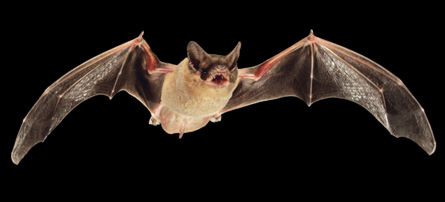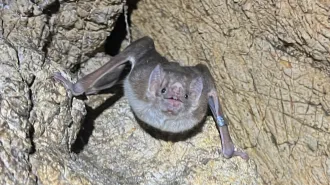It’s bat vs. bat in aerial jamming wars
Special wavering call sabotages aim

SONAR WARS Of the 15 known kinds of squeaks and chirps that a Mexican free-tailed bat makes, one looks like aerial sabotage.
Tolka Rover/Flickr (CC BY-NC-SA 2.0)
In nighttime flying duels, Mexican free-tailed bats make short, wavering sirenlike waaoo-waaoo sounds that jam each other’s sonar.
These “amazing aerial battles” mark the first examples of echolocating animals routinely sabotaging the sonar signals of their own kind, says Aaron Corcoran of Wake Forest University in Winston-Salem, N.C. Many bats, like dolphins, several cave-dwelling birds and some other animals, locate prey and landscape features by pinging out sounds and listening for echoes. Some prey, such as tiger moths, detect an incoming attack and make frenzied noises that can jam bat echolocation, Corcoran and his colleagues showed in 2009 (SN: 1/31/09, p. 10). And hawkmoths under attack make squeaks with their genitals in what also may be defensive jamming (SN Online: 7/3/13). But Corcoran didn’t expect bat-on-bat ultrasonic warfare.

Five years later he concluded he wasn’t just hearing things. He and William Conner, also of Wake Forest, report in the Nov. 7 Science that the up-and-down call can cut capture success by about 70 percent. Using multiple microphones, he found that one bat jams another, swoops toward the moth and gets jammed itself.
Corcoran says that neighborly sabotage could be especially valuable for the highly sociable Mexican free-taileds (Tadarida brasiliensis). “If you live in a cave with a million bats,” he says, “you have to go out and find food — and compete with a million bats.”
JAMMED SIGNAL Three video clips filmed outdoors at night show Mexican free-tailed bats (the larger white shapes) hunting tethered insects (smaller white shapes). The first clip shows a successful midair catch, and the rest show how jamming calls foil the attempts. Credit: A.J. Corcoran et al./Science 2014.







